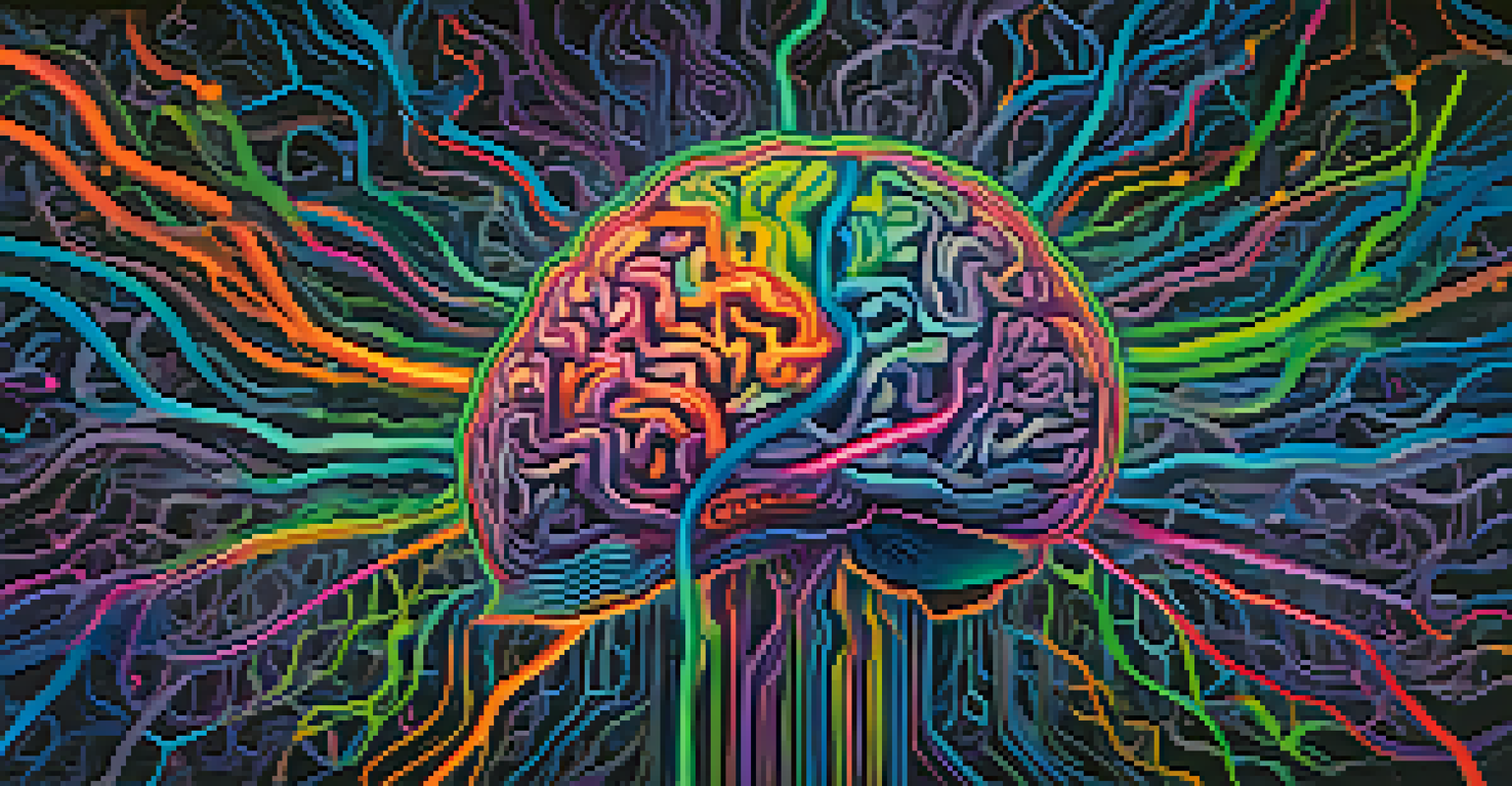Psychedelics and Neuroplasticity: Healing Through Change

Understanding Psychedelics: A Brief Overview
Psychedelics are substances that alter perception, mood, and cognition. Common examples include LSD, psilocybin (magic mushrooms), and ayahuasca. These compounds have been used for centuries in various cultures for spiritual and healing purposes.
Psychedelics are not just drugs; they are tools for transformation, revealing the hidden depths of our consciousness.
Recently, there has been a resurgence of interest in psychedelics, particularly in the realm of mental health. Researchers are exploring their potential to treat conditions like depression, anxiety, and PTSD. This revival is not just about the substances themselves but also about understanding how they work in the brain.
One key aspect of psychedelics is their ability to promote neuroplasticity—the brain's capacity to change and adapt. This is crucial for healing, as it allows individuals to rewire their thought patterns and emotional responses.
What is Neuroplasticity and Why It Matters
Neuroplasticity refers to the brain's ability to reorganize itself by forming new neural connections throughout life. This adaptability is essential for learning, memory, and recovery from brain injuries. Understanding neuroplasticity helps us grasp how experiences shape our brains.

When we encounter new experiences, our brain creates pathways to integrate this information. As we repeat actions or thoughts, these pathways strengthen, making certain behaviors easier. However, negative experiences can also create rigid pathways, leading to patterns of thought that contribute to mental health issues.
Psychedelics Enhance Neuroplasticity
Psychedelics promote neuroplasticity, allowing the brain to form new connections and potentially aiding in the recovery from mental health conditions.
Encouraging neuroplasticity is like giving our brain a fresh canvas. By engaging in new activities, learning new skills, or even having transformative experiences through psychedelics, we can reshape our mental landscape and foster emotional healing.
The Science Behind Psychedelics and Neuroplasticity
Research indicates that psychedelics can enhance neuroplasticity by promoting the growth of new neurons and synapses. Studies have shown that psychedelics like psilocybin can increase the expression of brain-derived neurotrophic factor (BDNF), a protein crucial for neuron health and growth.
Neuroplasticity is the brain's ability to reorganize itself by forming new neural connections, and psychedelics can enhance this remarkable capacity.
This influx of BDNF may help the brain form new connections, which is particularly beneficial for those recovering from trauma or mental health disorders. The experience of a psychedelic trip can also facilitate profound insights, allowing individuals to confront and process past experiences.
In essence, psychedelics can act as catalysts for change, enabling the brain to break free from dysfunctional patterns. This mechanism is what makes them a promising area of study in the field of mental health.
Psychedelics as Tools for Emotional Healing
Many individuals report profound emotional insights during psychedelic experiences, often leading to significant personal transformations. For example, someone grappling with anxiety may find that a psychedelic experience allows them to confront and process their fears in a new way.
This emotional healing is not just about the experience itself; it often requires integration afterward. Many therapeutic approaches encourage individuals to discuss their experiences with a professional, helping them apply insights to their everyday lives.
Set and Setting Affect Experiences
The mindset ('set') and environment ('setting') significantly influence the outcomes of psychedelic experiences, impacting their healing potential.
The possibility of using psychedelics as tools for emotional healing highlights the importance of creating safe, supportive environments for their use. This can maximize the benefits while minimizing potential risks.
The Role of Set and Setting in Psychedelic Experiences
The concept of 'set and setting' is crucial in shaping the psychedelic experience. 'Set' refers to the individual's mindset, including their thoughts and emotions, while 'setting' pertains to the physical and social environment in which the experience occurs.
A positive mindset and a supportive environment can enhance the healing potential of psychedelics. Conversely, a negative mindset or an uncomfortable setting can lead to challenging experiences, sometimes referred to as 'bad trips.'
Understanding this concept is vital for anyone considering psychedelics for healing. It emphasizes the need for preparation and aftercare, ensuring individuals are ready to explore their inner landscapes safely.
Current Research and Clinical Applications
Current research on psychedelics is expanding rapidly, with numerous studies exploring their potential in treating various mental health conditions. For instance, clinical trials are investigating the efficacy of psilocybin for depression, showing promising results in reducing symptoms and improving overall well-being.
These studies often combine psychedelic experiences with psychotherapy, creating a holistic approach to treatment. This combination allows individuals to process their experiences in a guided manner, enhancing the therapeutic effects.
Research Supports Therapeutic Use
Current studies demonstrate the promising efficacy of psychedelics, particularly psilocybin, in treating various mental health disorders when combined with psychotherapy.
As this field grows, it promises to revolutionize our understanding of mental health treatment, offering new hope for those who have not found relief through traditional methods.
Navigating the Future of Psychedelics and Healing
The future of psychedelics in healing is bright, with increasing acceptance and interest from both the public and scientific communities. As research continues to reveal their potential, we may see a shift in how mental health is approached, focusing on holistic and integrative methods.
However, navigating this new landscape requires caution. As with any powerful tool, there is potential for misuse, and it’s crucial to advocate for responsible use within therapeutic frameworks. Education and awareness will play key roles in ensuring safe practices.

Ultimately, the journey toward understanding psychedelics and neuroplasticity is just beginning. By continuing to explore these intriguing connections, we can open doors to innovative healing pathways for those in need.